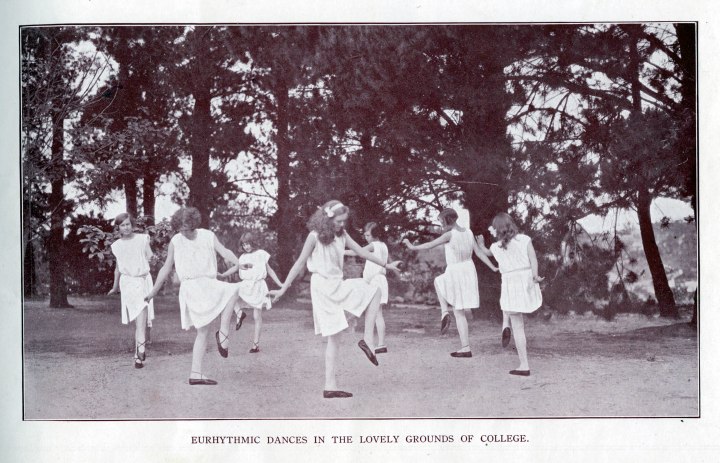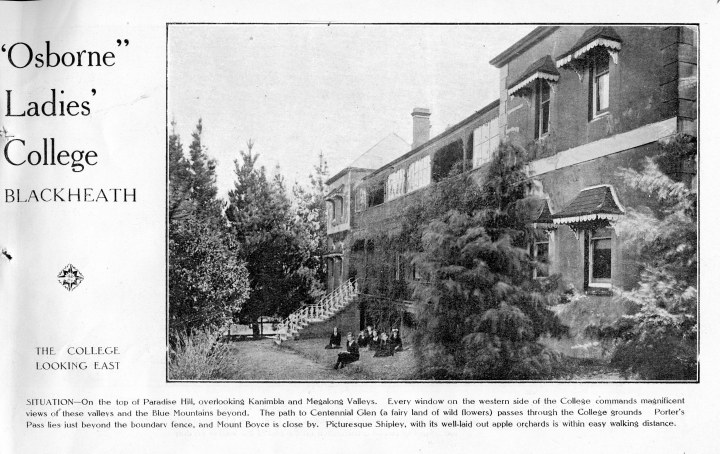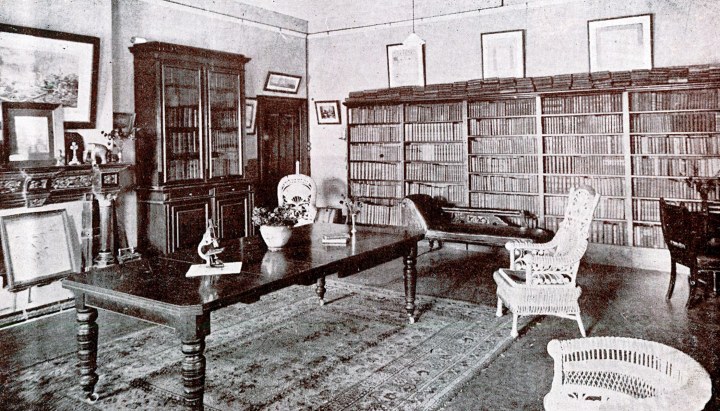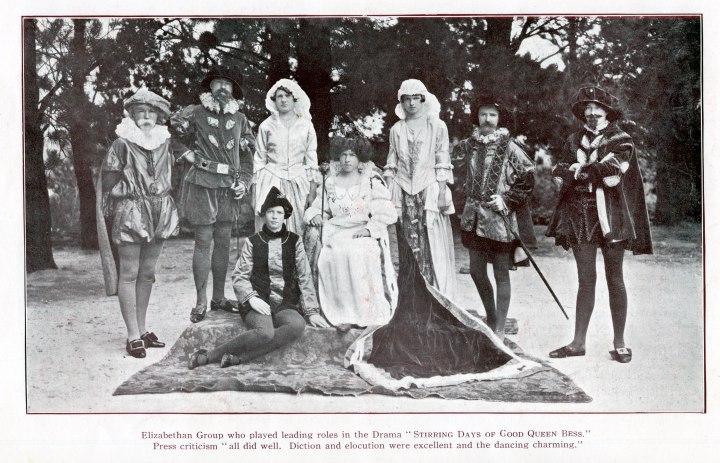
Most of us recall the story of Miss Appleyard and her College for Young Ladies depicted in the film “Picnic at Hanging Rock”. Located at Macedon in Victoria this story could just as easily have played itself out in the dramatic scenery of the Blue Mountains where, in the late 19th and first half of the 20th Centuries, many private-venture schools run by idiosyncratic, sometimes eccentric, educators were established. One such school was the Osborne Ladies College, which moved to Blackheath from the Sydney suburb of Epping in 1923.
The college established itself in a large, three-storey building that had originally been intended as a hotel. The property looked out over the Kanimbla and Megalong Valleys and had access to a variety of popular walking tracks. The college prospectus proclaimed the virtues of its setting “amidst scenery unequalled the world over and in a climate which defies disease”. To the people of Blackheath its location was known as ‘Paradise Hill’.

In pursuing her aim to produce refined, public spirited young ladies the headmistress, Violet Gibbons, drew upon her own patriotic passion for Britain and the British Navy. In the words of a former student, this became her “magnificent obsession”. Not only did her school take its name from the Royal Naval Training College on the Isle of Wight, but naval jargon, procedure and tradition permeated all aspects of school life.
The school’s dormitories, classrooms, dining and assembly rooms and even the bathroom became ‘ships’ and sailed the educational seas under such famous names as Sirius, Sydney, Revenge, Rodney, Pelican, Neptune and Nelson. The system of authority within the school paralleled a naval structure of command, the younger students beginning as midshipmen, or ‘middies’, attaining the rank of lieutenant or captain in their senior years. Teachers were commanders and the headmistress the Admiral who addressed her crew from the quarterdeck or bridge.

Discipline was strict and order and Spartan comfort characterized the daily routine. Some former students were grateful for this, feeling it strengthened and matured them, though a number found it harsh and not to their liking. Morning inspection parades ensured, according to the college prospectus, “that the general appearance of the pupils is up to the standard of the R.N. in cleanliness and smartness. “We polished everything”, recalled one student, “our shoes, our buttons and our gum boots. Lots of spit and polish.”
Uniforms were designed along naval lines with jackets sporting six brass buttons and marching was a regular feature of college life. The girls marched in formal fashion to welcome important guests at the school gates on patriotic occasions like Anzac Day and a long, silent crocodile marched down to the post office to collect the mail. In the early mornings, whatever the weather, they marched to warm up and get their circulation going. “It didn’t matter how cold it was or whether it was snowing, we all went under the house where we kept our gum boots – cold, cold gum boots – put on rain coats and marched up and down the drive in all kinds of weather and then came back, put our gum boots back on their ledges and our rain coats back on their hooks and had porridge.”

At its peak Osborne accommodated 50-75 students drawn mainly from country areas in NSW but also from inter-state and even beyond Australia. They came from a cross-section of economic backgrounds and were prepared for Intermediate, Leaving Certificate and Matriculation examinations in subjects ranging from English, History, Geography, French, Latin, Mathematics and Science to Art, Music, Elocution and Dancing. Commercial and Domestic Science subjects were also included along with Physical Culture (including Eurythmics).
Osborne’s best years were the 1920s and 1930s. It struggled on after World War II and eventually closed its doors following the death of Miss Gibbons in 1958. The old building was burnt to the ground in the 1980s.

What are we to make of such a school today? Its notions of the qualities required to be a ‘lady’ now seem ‘old fashioned’ and some of its educational methods probably appear eccentric, antiquated or even mistaken. Yet, the range of experiences in learning and physical activity offered was broad and, if one goes by published exam results, prizes won by pupils and the recollections of ex-students, the quality of its education seems to have been of a generally high standard. Headmistresses like Miss Gibbons were independent and admirable women at a time when the opportunities for females to pursue professional careers were, to say the least, few. Their schools, while certainly ‘of their time’, filled an important social and educational niche.
Written by John Low
Edited by John Merriman
All images from the Local Studies Collection


Hi, this is such a wonderful post.
Just a note re: “John McManamey would go on to found Woodford Academy boys school in the lower Blue Mountains”. (This is the note below the 1925 Prospectus).
However, John founded Woodford Academy soon after 1907, before working at Osborne.
The National Trust notes:
“After marrying, Jack became the first Headmaster at the newly-founded Scots College at Lady Robinsons Beach in Rockdale, Sydney. They later moved to Woollahara, Manly, and then Queensland in 1900. In 1907, Jack, Ettie and their two young daughters Jessie and Gertrude moved to Woodford House in the Blue Mountains. They renamed it Woodford Academy, and opened a boarding school for boys.”
Perhaps he started working at Osborne so his girls could attend there too.
LikeLike